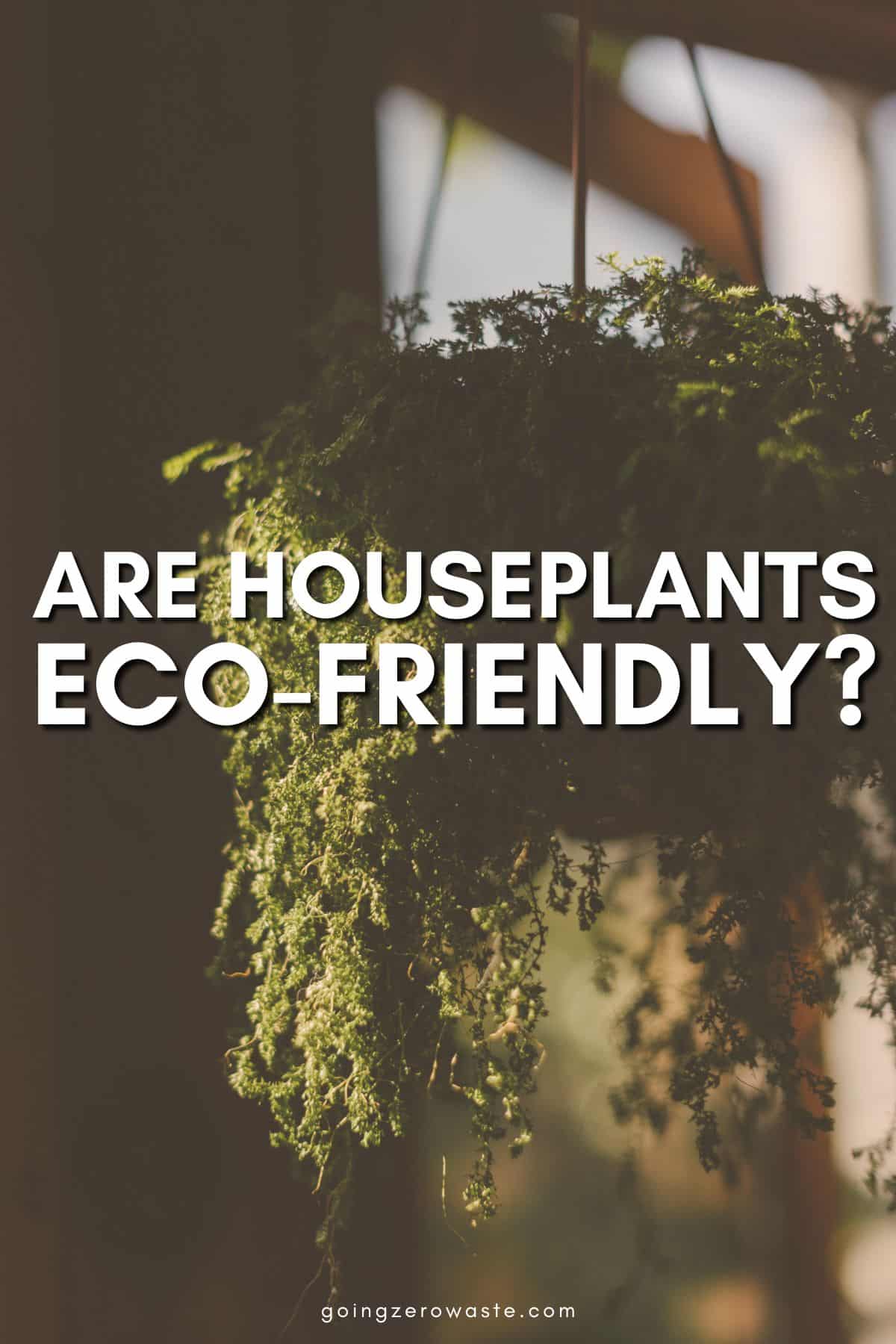[ad_1]
Last Updated on May 9, 2024
I love houseplants: They can really open up a room and are such a great way to fill a space. I currently have a pretty Money Tree plant that’s pet-friendly and adds the perfect pop of green to my desk space.
I’m not alone: The houseplant industry is booming. In 2019 a survey revealed U.S. houseplant sales increased by 50% to $1.7 billion in three years’ time and that trend has snowballed since then.
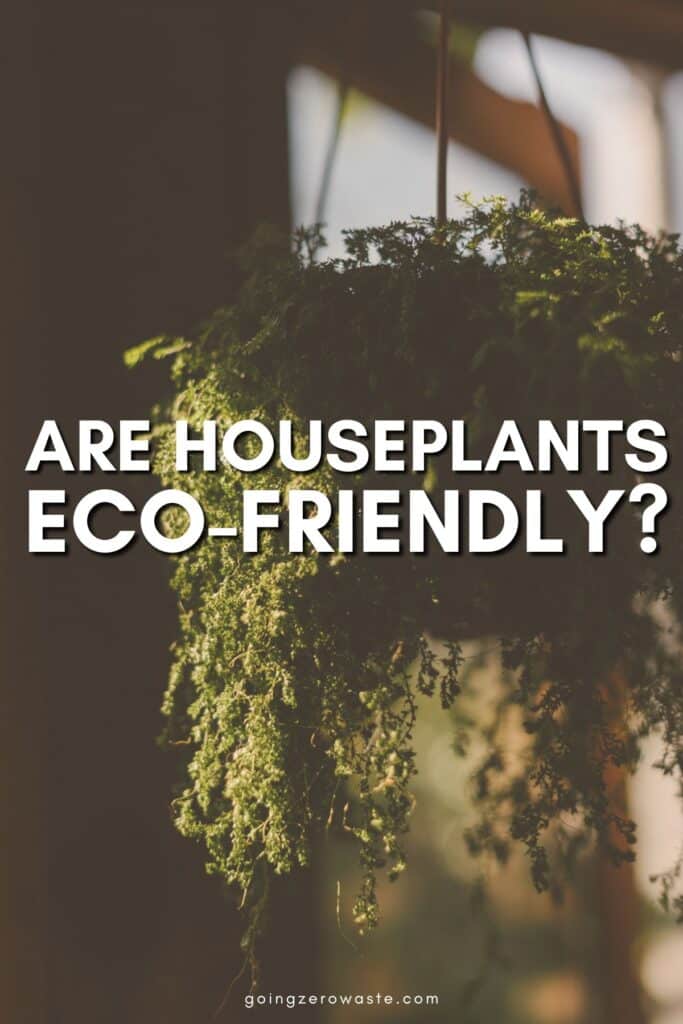

But is this horticultural hobby eco-friendly? That depends on how you get your plant babies, and how/where they were grown.
Ironically, green indoor spaces can come at a cost to the environment.
Like everything else we buy, houseplants also have an environmental impact. There are several factors to consider, such as “plant miles”, plastic waste and peat moss harvesting.
Here’s what you need to know about the plant industry’s environmental footprint, if your plant obsession is contributing to it, and what you can do about it.
environmental impacts of houseplants
Plants may be green, but that doesn’t automatically make them eco-friendly.
There are multiple environmental impacts of houseplants to consider. Here are a few that we will be diving into:
- Plant miles: How far did your plant travel to get to you?
- Plastic waste: Plastic pots are the primary container used to house plants.
- Peat moss harvesting: Peat moss, an ingredient in most potting mixes, is being overharvested.
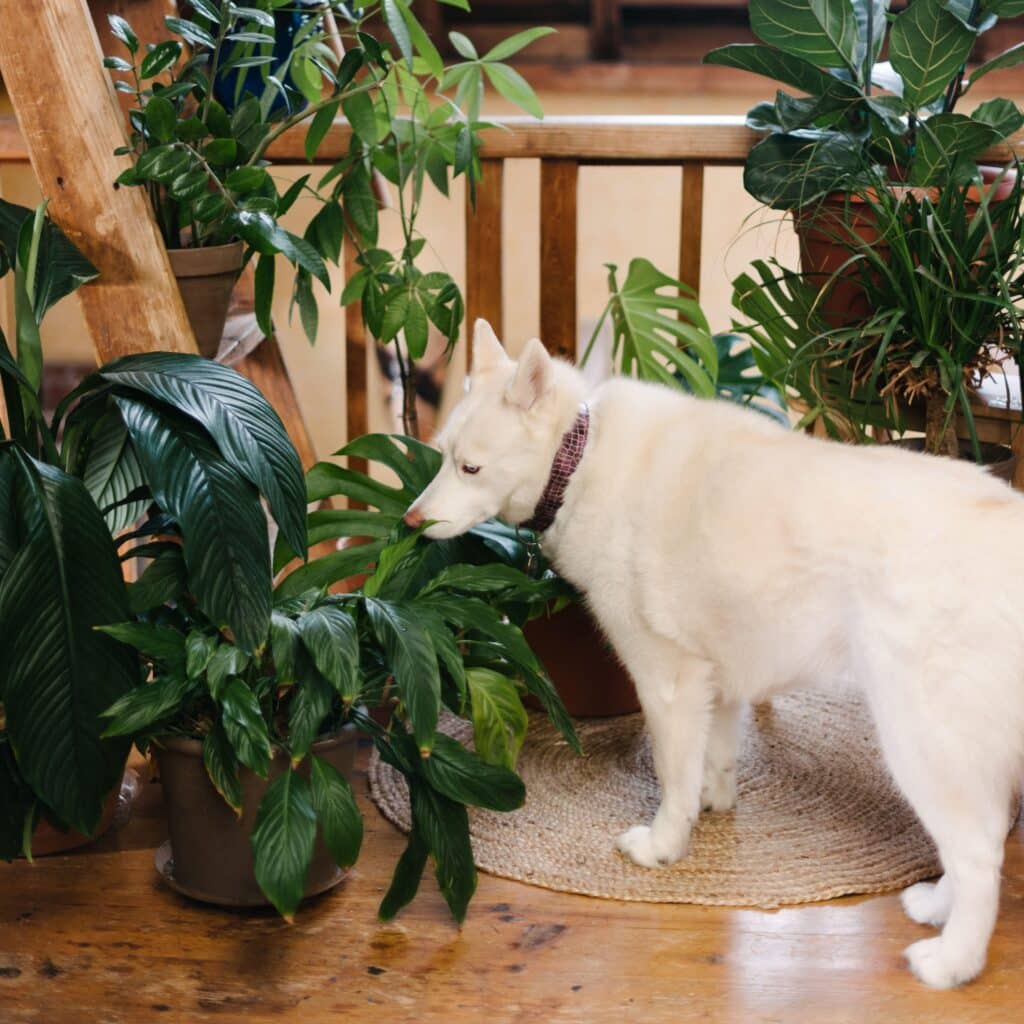

plant miles
Many of the houseplants we love come from tropical or subtropical environments. That’s a big reason they thrive indoors because they need consistently warm temperatures.
Most houseplants are imported from overseas and travel hundreds of miles before getting into our homes. The Swiss Cheese plant is just one example: It hails from Panama and southern Mexico.
Transporting plants over long distances, whether by plane, boat or truck generates a lot of carbon emissions. This is often referred to as “plant miles,” aka the total distance houseplants travel to get to you.
However, plant miles aren’t the only problem: It’s how they’re harvested that also matters. Plant poaching is a real threat due to increasing interest in rare plants and how much they fetch on the black market.
For example, the World Heritage Site is the world’s most biodiverse desert. More than 3,000 plant species exist in a relatively small area. Many of them are prized succulents that fetch high prices on the black market.
Some of these species live in an area smaller than a soccer field, so it would be very easy for a poacher to render the species extinct in a single morning.
For this reason, it’s so important the plant industry becomes more transparent about where they’re sourcing their plants.
what about houseplants grown in greenhouses?
One potential solution to combat plant poaching is to grow houseplants in a greenhouse. However, this is an imperfect solution, as greenhouses are huge energy suckers likely powered by fossil fuels.
Greenhouses are equipped with lighting and high-tech irrigation systems that require a lot of energy to maintain, especially for fickle houseplants that need a specific amount of warmth, sunlight, and water.
While greenhouses certainly cut down on plant miles, and ensure there’s no plant poaching, they would be a lot more sustainable if they ran on renewable energy. Unfortunately, many do not, or are not transparent about where they’re sourcing their energy from.
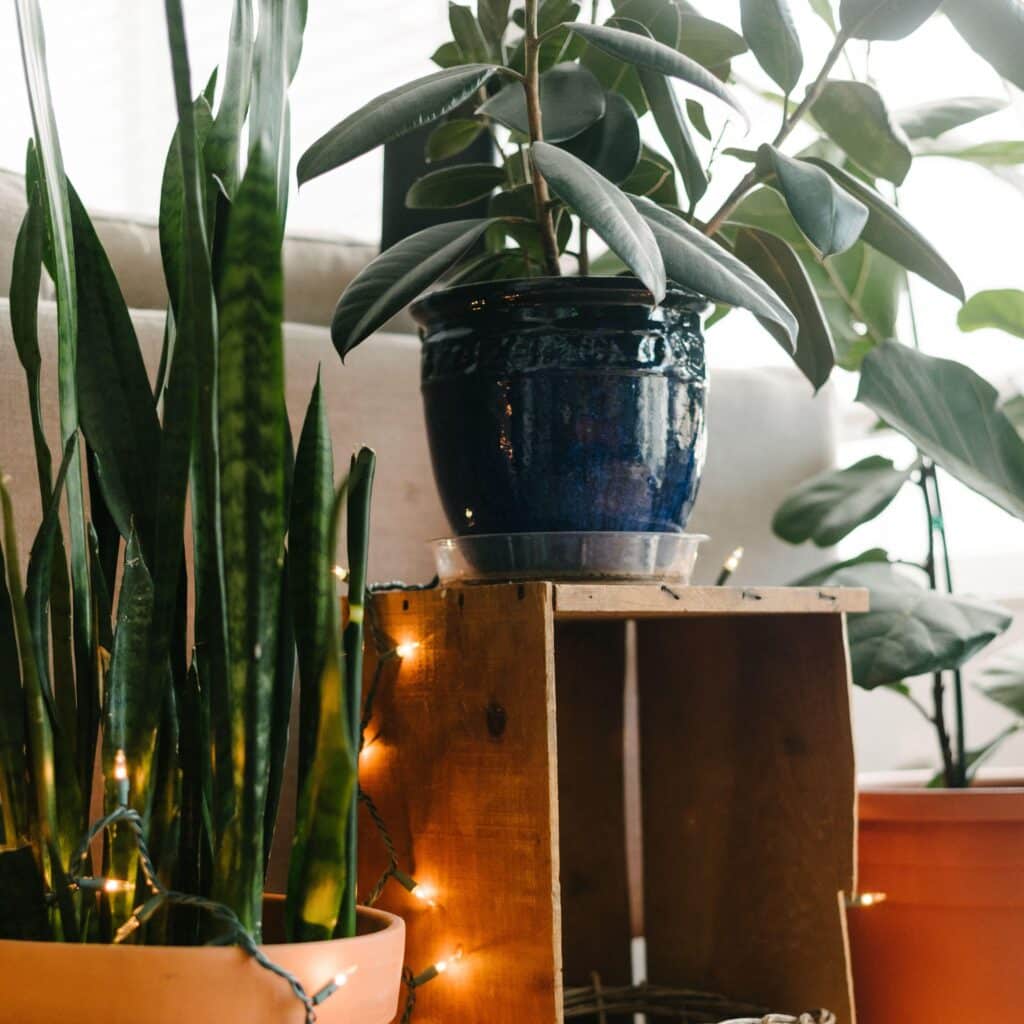

plastic waste
Plastic pots are the main container used to house most indoor plants. However, most houseplant pots are made from polypropylene (plastic #5) which isn’t widely accepted via curbside recycling services. Altogether, only 1% of plastic #5 gets recycled in the US.
That means if you want to transfer your houseplant into a more stylish container, the plastic pot it came in will likely end up in the trash. In fact, according to Marie Chieppo, Principal at EcoPlants Plans, 95 to 98% of all plastic plant pots end up in landfills.
This is a big problem for the environment, considering plastic’s life cycle is carbon intensive from beginning to end.
Plastic is a non-renewable resource that’s made from crude oil, which is extracted from the earth via fracking. It’s then manufactured into plastic in a fossil-fuel powered factory that uses a lot of energy and water.
Overall, only 5-6% of plastic gets recycled. The other percentage ends up in our landfills, environment, or incinerated.
Plastic never truly breaks down. While it is technically biodegradable (which simply means it will break up over time), it cannot be fully returned to the soil (aka composted).
That means over the course of hundreds of years plastic will break down into microplastics. Microplastics have already been found in human blood, feces, and placentas. It’s estimated we consume 11,000 microplastics per year, and the health effects of this are still unknown.
Despite all this, avoiding plastic pots is almost impossible if you want a houseplant. They’re used almost exclusively.
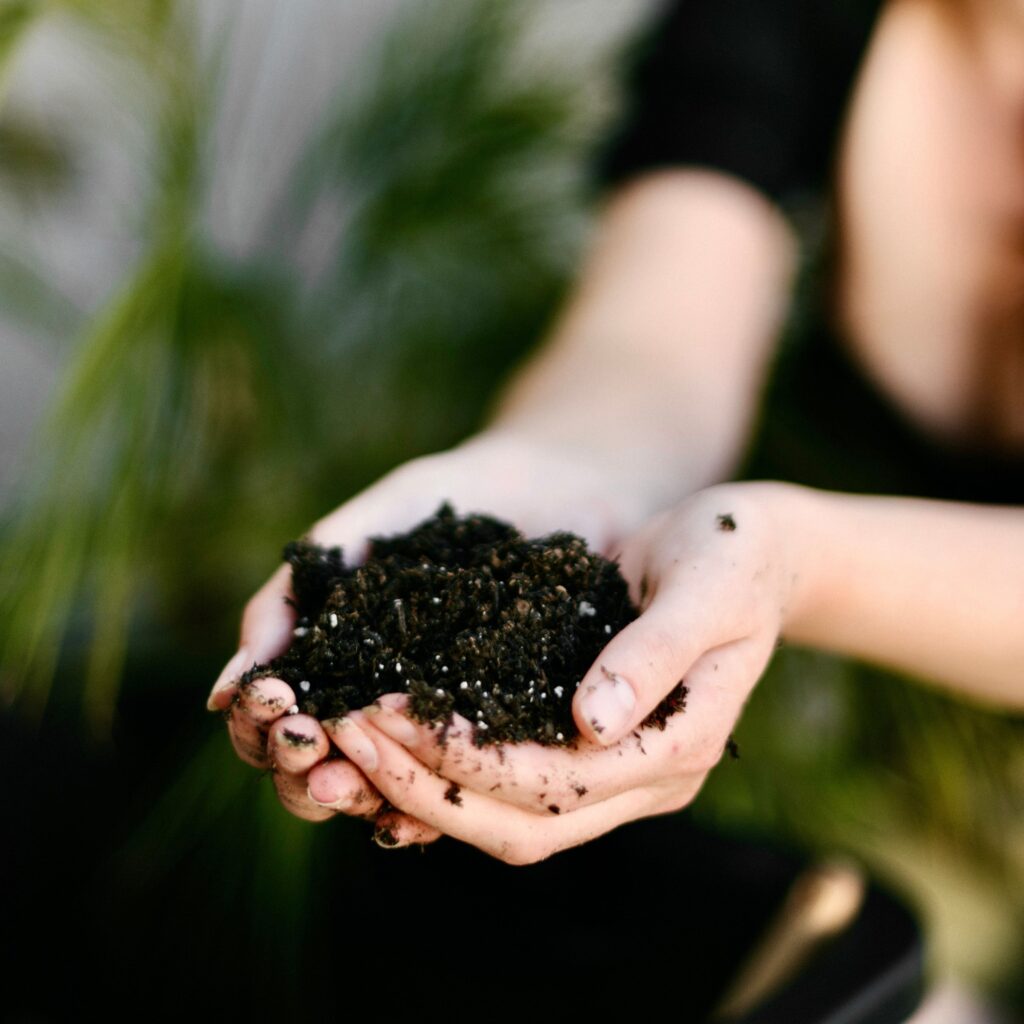

peat moss harvesting
Another big environmental impact of houseplants is the soil used in their pots. Often times, houseplants will be planted in soil that contains peat moss.
Peat moss prevents plants’ nutrients from washing away during waterings. It can also hold several times its weight in moisture, then release that moisture into the plant’s roots when needed.
But the problem lies in its harvesting, which requires the constant disruption and overharvesting of peatlands.
Peatlands are wetlands that play a critical role for preventing and mitigating the effects of climate change, reducing flood risk, preserving biodiversity, and ensuring safe drinking water.
These wetlands are the largest natural terrestrial carbon sinks, meaning they store more carbon than all other vegetation types in the world combined.
When peatlands are damaged and harvested for peatmoss, this leads to a major source of greenhouse gas emissions. According to the IUCN, ~5% of global greenhouse gas emissions from land use come from damaged peatlands.
To extract the peatmoss, tractors scrape along the surface of peat bogs, which releases CO2 back into the atmosphere.
Peatlands can also catch fire, which they often do when harvested in dry conditions. Burning peat is even more polluting than burning coal and can have severe effects on human wellbeing.
This also impacts wildlife too: The IUCN attributes the 60% decline of the Bornean orangutan population to the loss of peat swamp habitat over a 60-year period.
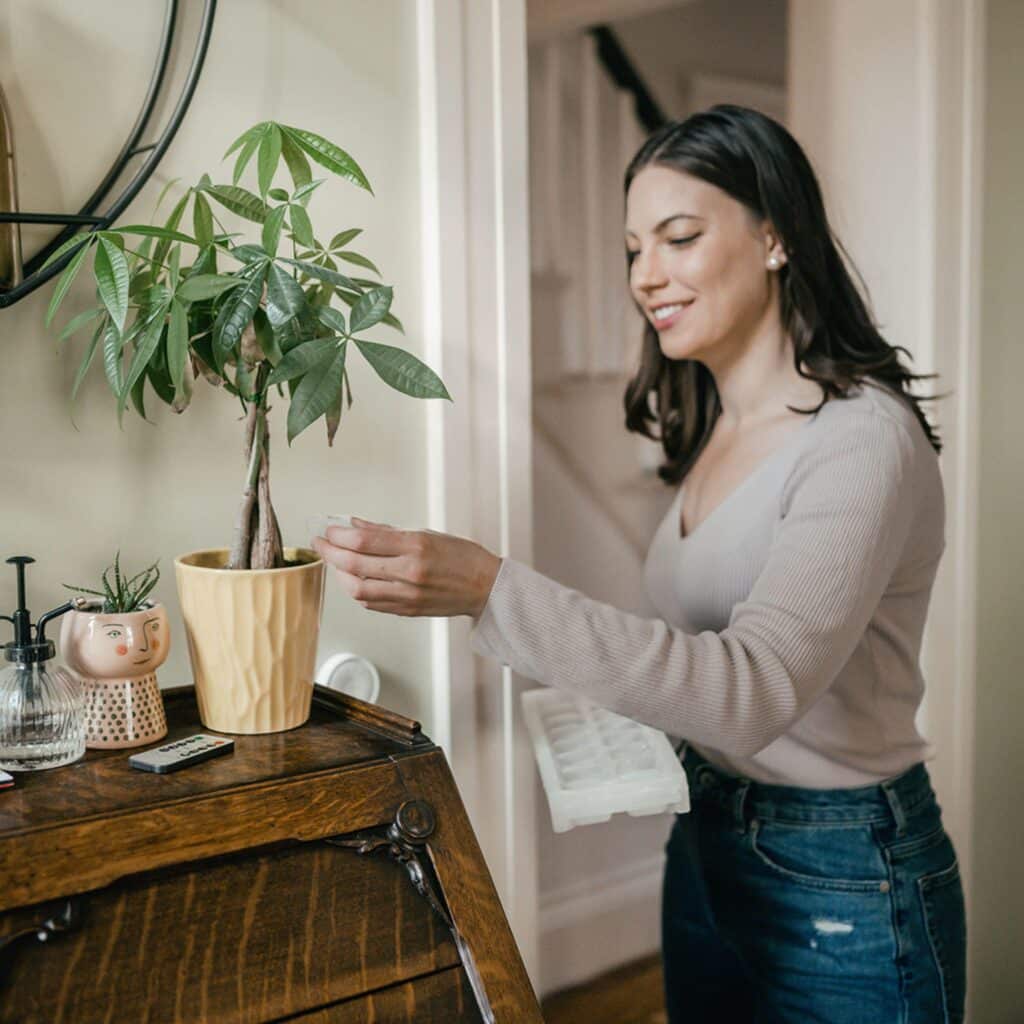

how do you grow houseplants sustainably?
Okay, so now that you’re aware of the problems, lets talk about the solutions!
You don’t have to toss out the houseplants you already have either (that would be counterproductive).
Here’s how you can make your houseplant addiction a little bit more sustainable.
buy less plants
I know this sounds obvious, but reigning in how many houseplants you accumulate is the easiest way to make a big impact. Everything we consume has an environmental impact, so buying less is always the best option.
propagate cuttings
Have some houseplants already? Or know someone who does? Propagate some plant cuttings to grow a whole new plant. This way, you don’t have to buy anything new.
Use a small upcycled empty glass jar, like a spice container, to propagate your cutting. Just fill it with some water, put your cutting inside it, and place it in a sunny location. When you see roots growing, it’s time to plant it in soil!
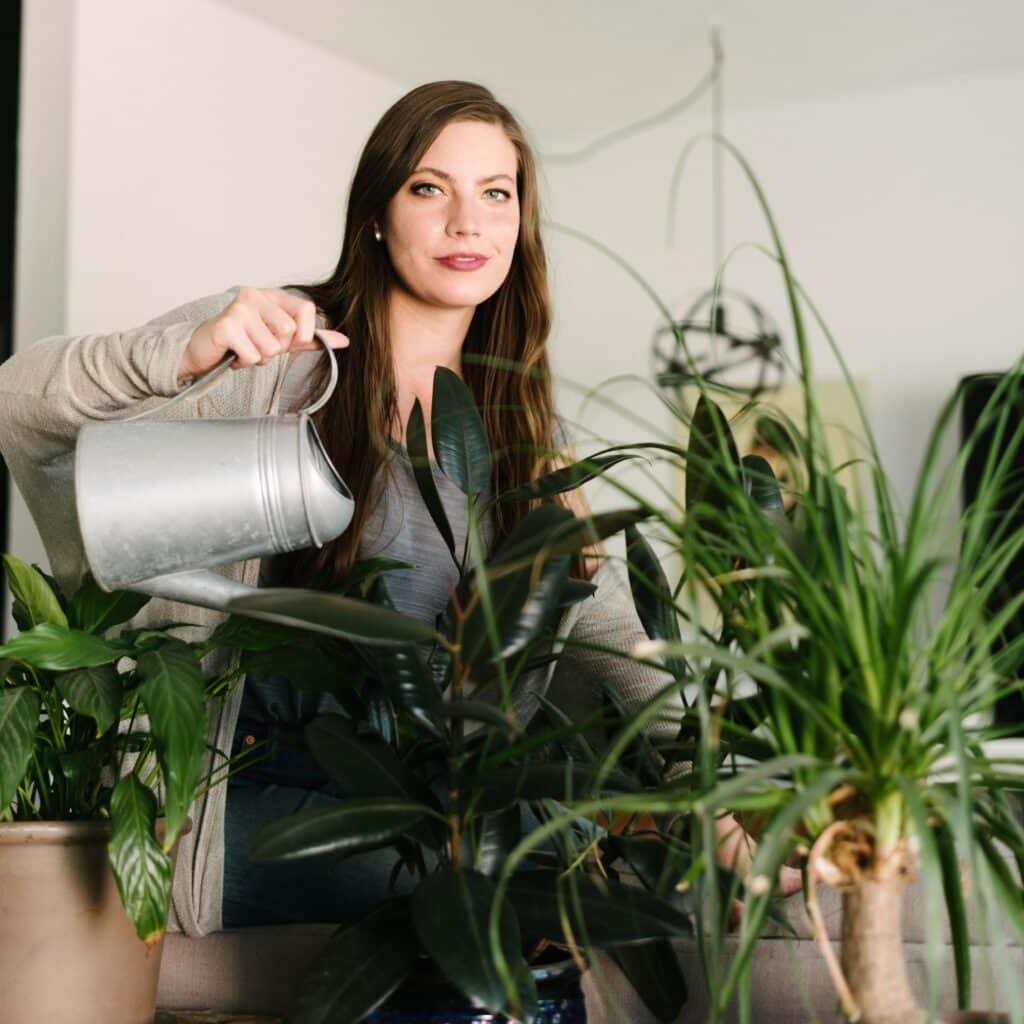

use sustainable potting soil
Peat-based soil is most commonly used in houseplants. But peatmoss bogs are vital carbon sinks that are being overharvested, which is contributing to climate change.
Instead, look for peat-free soil, like Rosy Soil, which instead uses biochar, compost, pine bark fines, mycorrhizae, pumice, and sand. There are no synthetic ingredients in their soil mixtures. Their packaging is recyclable and made from plant-based ingredients.
It’s also a great idea to start buying your houseplants from a transparent and sustainable company like The Sill. All their plants are potted in organic potting soil that’s made from a mix of worm castings, coir, compost, aged pine bark, and rice hulls. It’s completely peat-free.
Plus, The Sill provides upcycled grow pots as an option, and they use carbon neutral shipping on nearly all their online orders.
You can also just use compost you made yourself! Here’s how to compost in your backyard.
RELATED: How to Build a DIY Compost Bin
For smaller spaces, Lomi is a great option because it creates nutrient-rich Lomi Earth (aka pre-compost) which is rich in microbial cultures and organic matter. This is perfect to use on plants of all kinds to help them flourish.
upcycle your plastic pots
It’s hard to avoid plastic pots with houseplants. Instead of tossing them out, disinfect them and save them for other gardening projects. You may even be able to return them to the nursery so they can be reused. Or check and see if your local community garden has any need of them.
get local plants
Look for local plant swaps or garden clubs in your area. They’re often organized online, via social media, or by libraries. Other gardeners are often happy to give you cuttings of their own plants and can instruct you on tips to help them thrive.
Do you have a plant addiction too? Will you be trying out any of these tips? Let me know in the comments below.
[ad_2]
Source link
